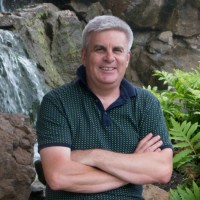
Associate Professor Paul Williams
Cultural/historical geography; Post-industrial landscapes
| Degrees: | BAH - Wilfrid Laurier, MPhil - Wales (Cardiff), Ph.D. - Queen’s University |
| Phone: | 613-520-2600 x 6290 |
| Email: | paul.williams@carleton.ca |
| Office: | B353 Loeb |
Current Research
About 20 years ago I became a cultural/ historical geographer after a career in archaeology. My research interests have focused on place, nation and identity. In particular, I am interested in how meaning is written in place and how meaning changes through the life-story of a particular place. I coined the term place-biography to describe this process. Within this framework my specific interest is in heritage places that help to inform and reinforce a sense of local, regional or national identity. Lately, I have taken an interest in post-industrial landscapes and in the recording, or recapturing, of cultural memories associated with them. This work I have been doing through collaborative class and individual projects with senior undergraduate students. The latest project has been the creation of an online Historical Atlas of the Changing Landscapes of Chaudiere Falls and the islands, Ottawa. A similar project will shortly focus on LeBreton Flats.
2024 – 2025 Courses
- FYSM 1101 Fall/Winter – Location is Everything
- ENST 2500/GEOG 2500 Winter – Climate Change: SS Perspectives
- GEOG 3021 Fall – Geographies of Culture and Identity
Selected Publications
(2012) Review: Travis W. Stanton and Aline Magnoni (eds.). 2008. Ruins of the Past: The Use and Perception of abandoned structures in the Maya Lowlands (Boulder, Col: University Press of Colorado) in Historical Geography 39.
(2007). “Erecting ‘an instructive object’: The case of the Halifax Memorial Tower,” Acadiensis, Vol.XXXVI, No. 2, Spring/Printemps, pp. 91-112.
(2006) “A Local Sense of Place: Halifax’s Little Dutch Church,” Canadian Journal of Communication, Vol. 31, pp. 59-83.
(2005). “Tales from the Crypt.” Chapter in Erickson, Paul (ed.). Underground Halifax. Hantsport: Nimbus Publ.
(2003). “A Vision of Progress and Nostalgia: The Halifax Memorial Tower.” International Journal of Heritage Studies, Vol.9, No.3, pp.243-265.